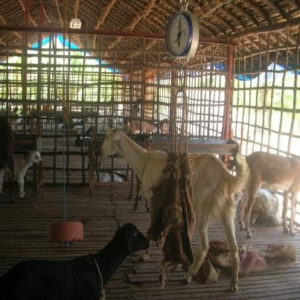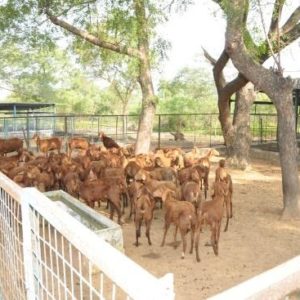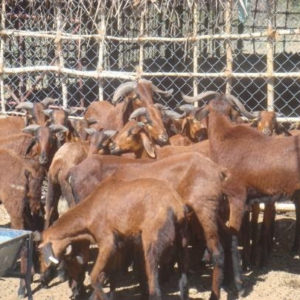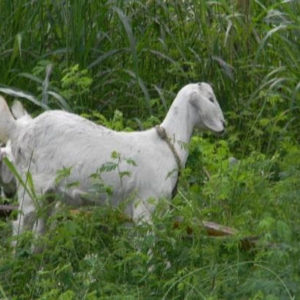Low cost house
General considerations for sheep and goat housing


Open type housing with run space

Sheep in open space

Fodder Cultivation near by shed
- Provision of simple shed with low cost housing materials is enough for sheep and goat for its optimum production efficiency.
- Sheds with mud floor are suitable for most of parts of the country except where high rainfall is observed.
- The sheds should be constructed in an elevated area to prevent water stagnation.
- Fodder trees can be grown around the shed, which acts as a source of feed for the growing goats.
- Clean drinking water should be available for goats.
- Sheds should be constructed with proper ventilation.
- Walls of the shed should be free from cracks or holes, while constructing.
Floors of the shed should be firm and should have the capacity to absorb water. The floors should be constructed in such a way, so that it should be easily cleaned. - Types of sheds depend on the system of rearing.
- Open type housing with a covered area and run space is generally enough.
- The run space should be covered by chain links.
- The covered area is used for shelter of animals during night and adverse climatic conditions.
- For a comfortable house east-west orientation with generous provision for ventilation /air movement to dry the floor will be suitable.
- Thatched roof is best suited one due to cheaper cost and durability.
- However corrugated asbestos sheets can also be used for organized farms to minimize the recurring costs and to have longer durability.
Gable roofing is generally preferred. - For small sheds lean to type roofing is advisable.
- When the animals are taken for grazing during the day time and sheltered only during night, the covered space will be enough.
- When the animals are housed intensively, the pen and run system of housing is suitable.
- There is no restriction for the length of the shelter, however breadth of shed should not exceed 12 meter and optimum breadth of shelter is 8 meter.
- Height of ewe should be 2.5 meter and height at ridge should be 3.5 meter.
- The height of chain link used for open space should be 4 feet. The length of the overhang should be 75cm – 1 meter.
- Separate feeders and water troughs should be placed for concentrate feeds, green fodders and water.
Floor space requirements
Recommended floor space requirements for Indian conditions
| Age groups | Covered space(sq.m) | Open space (sq.m) |
|---|---|---|
| Up to 3 months | 0.2-0.25 | 0.4-0.5 |
| 3 months to 6 months | 0.5-0.75 | 1.0-1.5 |
| 6 months to 12 months | 0.75-1.0 | 1.5-2.0 |
| Adult animal | 1.5 | 3.0 |
| Male, Pregnant or lactating ewe/ doe | 1.5-2.0 | 3.0- 4.0 |
Floor space requirement per animal (BIS standard)
| Types of animals | Minimum floor space per animal (59.m) |
|---|---|
| Ram or buck in groups | 1.8 |
| Ram or buck – individual | 3.2 |
| Lambs or kids – in group | 0.4 |
| Weaner in groups | 0.8 |
| yearling or goatlings | 0.9 |
| Ewe or doe in groups | 1.0 |
| Ewe with lamb | 1.5 |
Feeding and watering space requirement
| Type of animal | Space per animal (cm) | Width of manger/ water trough(cm) | Depth of manger/ water trough (cm) | Height of inner wall of manger/ water trough (cm) |
|---|---|---|---|---|
| Up to Sheep and goat3 months | 40 – 50 | 50 | 30 | 35 |
| 3 mKid/lambonths to 6 months | 30 – 35 | 50 | 20 | 25 |

